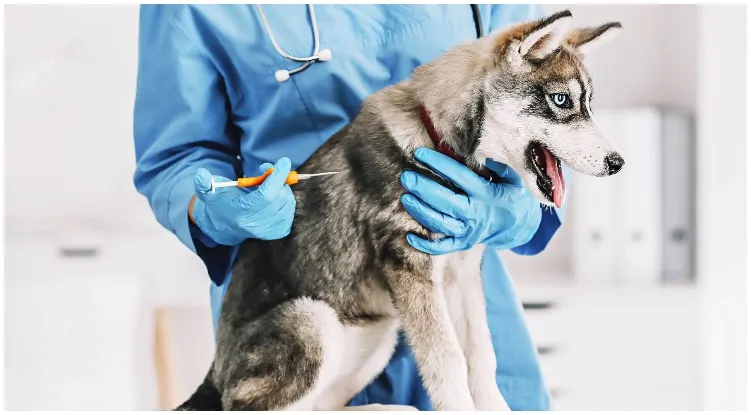These days many dog owners decide to microchip their canines. While to some people it may seem like a radical step and something unnecessary, it’s actually pretty genius and convenient. A microchip can help you locate your dog when he is missing. It also helps a stranger identify your dog if he finds him. If you ever come across a stray dog, it can also help you to know if the dog run away from somewhere and find it’s previous owners. But how can you know if a dog has a microchip? Can you feel a microchip on a dog?
Can you feel a microchip in a dog?
In most cases you can’t really feel a microchip in a dog. If the microchip was properly inserted between a dog’s shoulder blades, it shouldn’t be that easy to feel it. Inserting it between the shoulder blades will make sure that your dog doesn’t feel discomfort. That way the microchip won’t bother your dog in any way. However, sometimes the microchip can move over time. In those cases it is possible to feel it. Especially if a dog has thinner skin and fur.
How are microchips placed?
Microchips are inserted by vets in a virtually painless way directly between their shoulder blades. Not long after it has been placed the microchip will settle into the skin between the shoulder blades. That way it’s out of the way for your dog to pick at it, dislodge it, etc.
How big are microchips in dogs?
Microchips are tiny, and basically the same length and circumference as a grain of rice. If the microchip does move, it will feel like a tiny lump under your dog’s skin. The size of the microchip will make it especially challenging to find the microchip with your naked eye or feel it with your hands. Especially if the coat of your canine is fluffy.
How can you tell if a dog is chipped?
If you want to know if a dog is microchipped, know that the chances of feeling the microchip with your hands or seeing it with your naked eyes are very slim. Unless the dog has thin skin and very short fur (like chihuahuas) you won’t be able to do it.
However, you can use a microchip scanner to look for it. As we do doubt that you have a microchip scanner at home, you can take the dog to your vet to scan him.
The microchip scanner looks like a security wand and the vet just simply has to wave over the dog to find the microchip. If there is a microchip in the dog, a serial number of the microchip will show that can be used to connect the dog to his registration number.
Most vets won’t require the microchip scanning to be paid at all. They will assume that you have found a stray dog and are looking to find his family. So if you want to see if a stray dog is registered and has a microchip, don’t worry about the vet bill.
What does the microchip feel like?
The microchip is hard to the touch and narrow with rounded edges — just like a grain of rice would be.
So if you are ever in doubt if your dog has a lump or if it’s a microchip — most lumps won’t be so hard and narrow. Lumps are most commonly soft, have a different shape, or you can just tell that they are weird to the touch.
How can I know if my dog has a microchip?
If you recently adopted a stray dog and want to know if he has a microchip or not — the best thing to do would be to take him to a vet so that he can scan your dog. Like we already said, you won’t have to pay for it, and it will be the quickest and easiest way to found out. As you can not really feel a microchip in a dog with your bare hands in most cases.
If your dog does not have a microchip, we would highly suggest that you consider inserting one. It could be a life saver if your dog ever runs away or gets lost.
More content about microchips:
- Microchipping Your Golden Retriever: Risks & Benefits
- Should You Microchip Your Golden Retriever?
- Dog Tags: All You Need To Know

